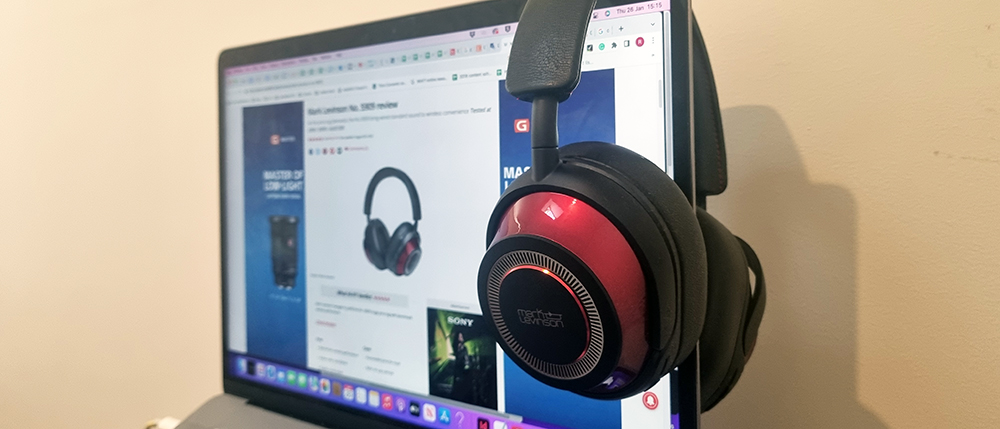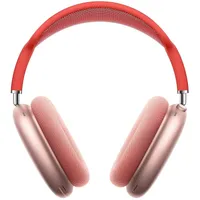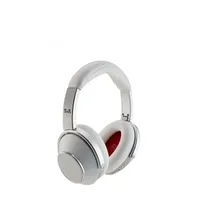What Hi-Fi? Verdict
For anyone who is after the convenience of wireless headphones without sacrificing too much sound quality to get it, and lucky enough to afford such a best-of-both-worlds solution, the Mark Levinsons are highly recommendable. Perceived value may not get top marks, but sonic value certainly does – and that’s really what matters here. Mark our words, these wireless headphones really wow.
Pros
- +
Benchmark wireless performance
- +
Decent active noise cancellation
- +
Quality construction
Cons
- -
Inaccessible price for most
- -
Basic on-cup controls
Why you can trust What Hi-Fi?
We wonder how many headphone and hi-fi manufacturers saw a green light beam in front of their eyes when, at the end of 2020, Apple announced a pair of wireless headphones costing twice as much as the then-current premium competition. The AirPods Max didn’t exactly push the price parameters of wireless over-ear headphones – Bang & Olufsen’s flagship pairs had already attracted a ‘premium’ for, as had a handful of special edition pairs (remember the 24ct gold-plated Dr Dre Beats Pro?).
Nevertheless, the audacious move by such a big company would have surely spurred some brands to consider similar ambitions. The rise in pricier wireless headphones in the years since, like these Mark Levinson No. 5909, the T+A Solitaire T, Focal Bathy and Bowers & Wilkins Px8, would suggest so – though the ongoing maturation of headphone and Bluetooth technology will have naturally played its part too.
The Mark Levinsons enter our test room doors as one of the most expensive wireless pairs we have tested and therefore do so with a weight of expectation on their shoulders. Can wireless performance ever be so good as to justify such an expense? That’s the question our in-house reviews team set out to answer.
Price
- One of the priciest wireless pairs we've come across
- Now significantly discounted in the UK
Price is naturally the elephant in the room with us as we unbox the No. 5909. It’s their most obvious talking point – before you’ve heard them, at least.
When they launched in January 2022, they carried a price tag of £999 / $999 / AU$1599 – twice as heavy as that of the five-star AirPods Max and Beyerdynamic Amiron Wireless and roughly three times more than the Sony WH-1000XM5 and their Bose, Sennheiser and Bowers & Wilkins rivals. You can now pick up the Mark Levinsons for closer to £600 in the UK, although the original pricing is holding up much better in the US and Australia.
While it’s hard to quantify how much better sounding than their more affordable peers they need to be to justify their price – twice as good? – it’s clear that to earn a recommendation from us they need to be significantly better than the cheaper competition. And the only way they’re going to do that is by sounding significantly better.
Features
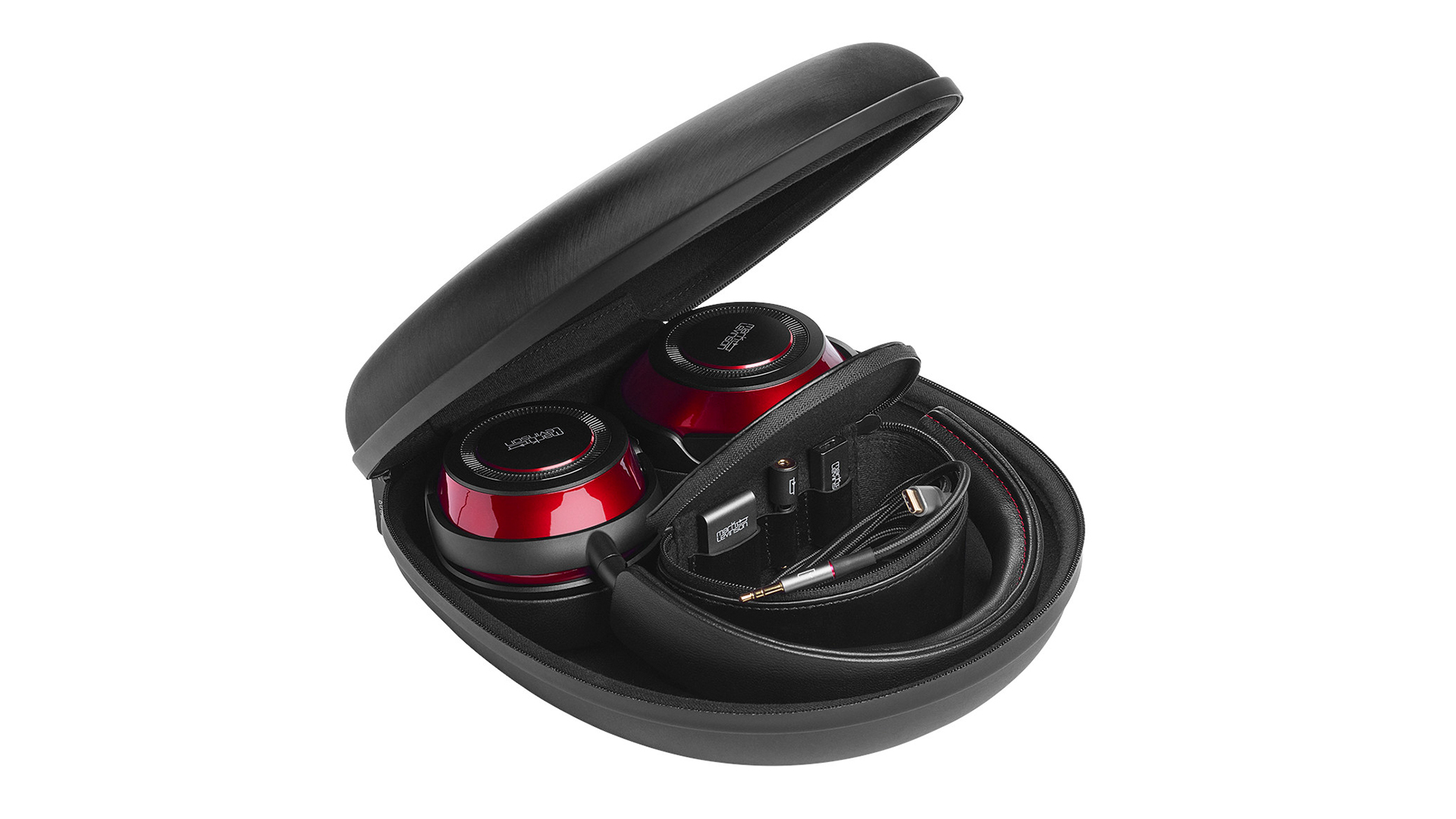
- High-quality Bluetooth codec support
- Competitive battery life with 'fast charging'
- Decent albeit not class-leading ANC performance
While there’s more to most products we test than their specification, you’d expect a pair at this price to tick the right boxes – and the right boxes the No. 5909 do indeed tick. Wireless connectivity comes in aptX Adaptive and LDAC flavours, which are essentially the best-quality Bluetooth codecs currently widely adopted. Qualcomm has come up with a superior next-gen aptX Lossless solution that can supposedly wirelessly transmit lossless audio uncompressed, but two years on from its launch it is still yet to reach a decent number of devices. So, high-quality Bluetooth support: tick.
The latest hi-fi, home cinema and tech news, reviews, buying advice and deals, direct to your inbox.
Active noise cancellation – an increasingly prevalent feature in wireless headphones and earbuds to the point that it’s almost expected – is another box ticked and comes in three modes: ANC High, Adaptive and ANC Low. An Awareness mode designed to let noise in for temporary convenience is available in (effective) Voice Pass and (more effective) Ambient options too. You can set your preferred ANC and Awareness settings in the accompanying Mark Levinson app, and they are then the two modes that, alongside ‘off’, you can cycle through using the right earcup’s dedicated ANC button.

That’s arguably the biggest justification for using the app, which otherwise simply lets you activate on-head detection so that music is automatically paused when the headphones are taken off/put back on (which works well); set an auto-timer to turn the headphones off after a period of no music playing; and choose between Neutral (default and, we find, preferred), Enhanced and Attenuated EQ sound profiles. For many, following initial experimentation, the app will be surplus to everyday listening needs.
Noise cancellation is well implemented, albeit more functional than forceful in its intensity (you don't get Bose QuietComfort Ultra Headphones levels of ANC, that is for sure). That’s not a criticism exactly; the Mark Levinsons physically block sound more than most pairs anyway due to their substantial build and solid-yet-satisfactory clamp force, and we admire the consistency of their sonic character and quality when noise-cancelling is on and off – not by any means a given for ANC wireless headphones. We don’t feel compelled to activate ANC on relatively noisy public transport but are pleased it’s there when a quieter classical piece comes on and that extra isolation from the outdoors and focus on the music is beneficial.

Battery life 34 hours
Bluetooth aptX Adaptive, LDAC, AAC
ANC Yes
Charging USB-C
Audio cables 1.2m + 4m
Activating noise cancellation doesn’t detrimentally impact battery life as much as it can either, though naturally there is a difference between the claimed ANC on (30 hours) and ANC off (34 hours) figures, which we’re pleased to say translate in real-life too. We find an hour of mid-to-high volume, ANC-activated playback drains three to four per cent (note that battery status is also viewable in the app).
Handily for the forgetful, a 15-minute ‘fast’ charge offers six hours of listening, too. In this day and age, you won’t be surprised to read that the No. 5909 charge via USB-C, and you’ll also be more relieved than surprised to know that a 1.2m USB-C charging cable and both 1.25m and 4m USB-C to 3.5mm cables for wired listening come supplied, packaged in an ovular hardshell case alongside a USB-C to USB-A adaptor, an airplane adaptor… and of course, the headphones themselves. Mark Levinson clearly believes the No. 5909 will be used both on the fly and at home, and it’s probably right.
Build

- Exceptional build quality
- Basic plasticky on-cup playback controls
Their design panders to both use cases – hefty and padded enough to enjoy for hours at home, yet also glitzy and compact enough (the cups can fold flat) to take out and about. Perhaps dubiously resembling AKG’s Quincy Jones-endorsed N90Q model from years previous, their red anodised aluminium frame, metallic painted ear cups (in red or black) and leather headband and earpads don’t immediately strike us as impressive for the money. Initially, we find ourselves questioning their perceived-versus-real value, especially as we slide our fingers over the small, plasticky earcup buttons. But after handling and wearing the No. 5909 for several weeks, it becomes easier to appreciate the remarkable quality of their construction.
In that time, however, we don’t become any more attached to the on-cup controls. We wish Mark Levinson had opted for a classier, more intuitive three-key volume and playback button, as it isn’t easy to quickly discern between the middle (play/pause and skip track) and side (volume up and volume down) controls when they’re being worn.
Sound
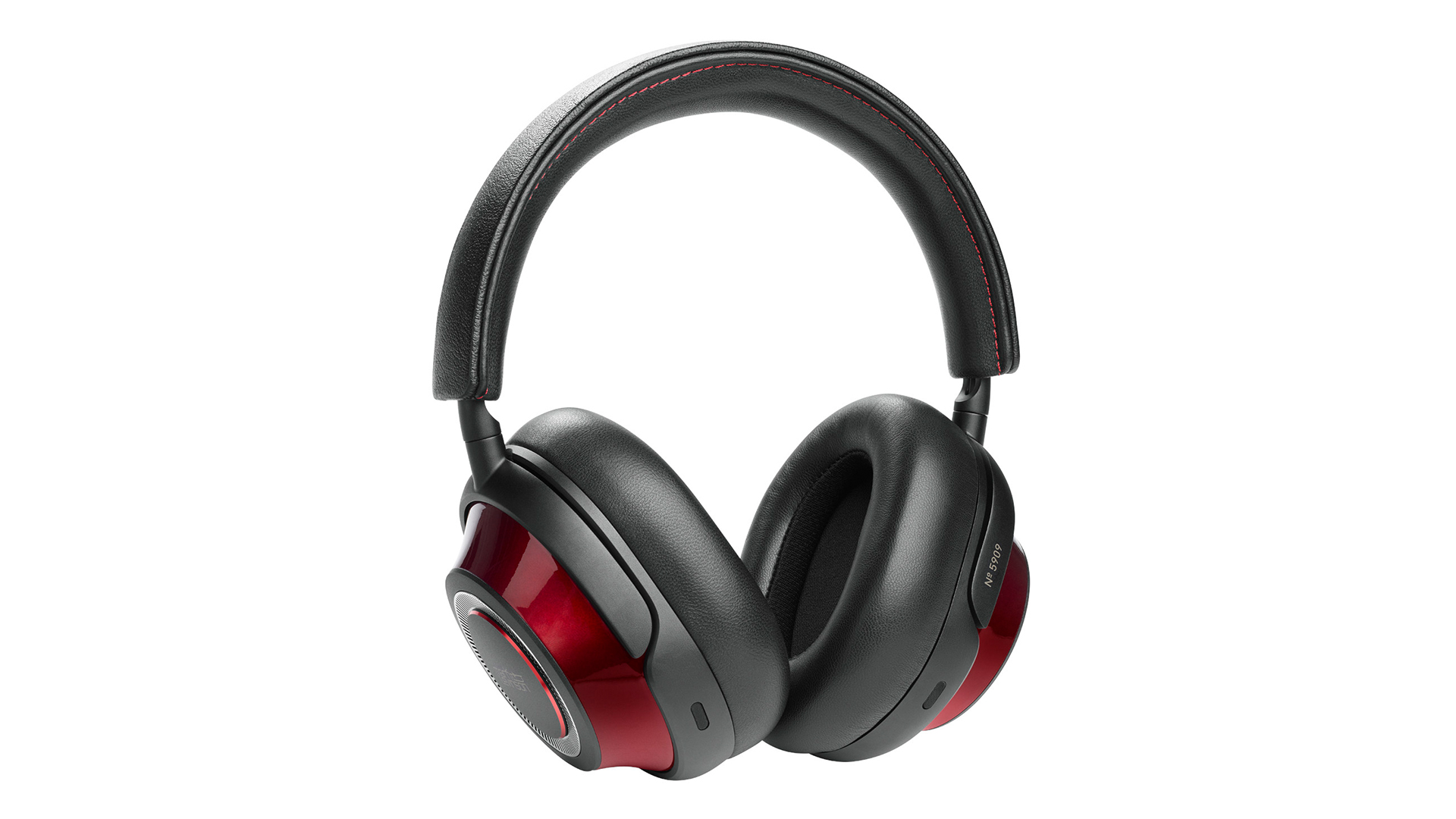
- Clearer, cleaner and more detailed than the cheaper competition
- Decent wired headphones and DAC pairing still sounds superior
That an unremarkable button is the first and last of our criticisms gives you a strong hint at the answer to the question we posed at the beginning of our review: can wireless performance ever be so good as to justify such an expense? Again, the No. 5909 need to perform substantially better than the class-leading crop of cheaper competition – and they do.
If we hadn’t unboxed the Levinsons and gone through the simple Bluetooth pairing process ourselves, we would be tempted to check for any wires dangling from the earcups. While the No. 5909’s performance is still short of the best available from similarly priced wired headphones, it’s easily the best wireless headphones performance we’ve come across.
The first adjective that comes to mind when we don the Mark Levinsons on our heads, connect them to our Astell & Kern music player via aptX HD Bluetooth and play Black Country, New Road’s Chaos Space Machine is ‘sparkling’, such is the crystal-clear and crisply detailed manner in which they present the track’s thespian instrumentation. The soundfield their 40mm Beryllium-coated drivers produce has the spic-and-span cleanliness and astute organisation to not be overwhelmed by the sonic density and frenetic energy of the experimental piece – even at higher listening levels, surprisingly. And every corner of it appears to embrace the subtle details and dynamics the septet has artistically shoehorned into the wild composition.
The vivacious production of Toto’s Rosanna gives the Mark Levinsons a sonic canvas on which to truly showboat – those drums biting, vocals rich, and guitar lines and keyboards infectiously musical. They lap it up as enthusiastically as a dog eats spilled ice cream. No part of the frequency spectrum is given undue priority, and that, coupled with the headphones’ attention to detail and brisk nature, makes the No. 5909 utterly compelling to listen to in a way lesser wireless headphones are not.
They aren’t just concerned with having a good time, either, as impressively shrewd when delivering the subtle dynamics and lingering harmonics of Ludovico Einaudi’s piano playing, and when asked to convey the woodwind textures and hit the climactic heights throughout The Hobbit: The Unexpected Journey soundtrack.
The Mark Levinson No. 5909 aren’t necessarily replacements for a wired set-up you’re happy with; a laptop feeding a Chord Mojo 2 DAC connected to Grado SR325x wired headphones offers greater all-round sonic sophistication and finesse. But they are not a million miles away and, of course, are much more practical to travel with.
First reviewed: August 2022. Updated review: November 2024.
Tester's notes
Our rigorous testing process for the Mark Levinson No.5909 involved comparing their sound and noise-cancelling abilities against the cheaper crop of premium competition to see whether they justified their higher price tag. We test dozens of wireless headphones across all price ranges every year and consequently have an unparalleled context of the market, while direct, side-by-side comparisons allow us to assess new arrivals against our What Hi-Fi? Award winners and five-star favourites to gauge exactly where they sit within it. You can read more about how we test and review headphones at What Hi-Fi? here.
| Header Cell - Column 0 | Tester's notes | Rating | Header Cell - Column 3 |
|---|---|---|---|
| Value | The best performers at their price, which is particularly good value in the UK thanks to a price drop | 5/5 | Row 0 - Cell 3 |
| Design | Built-to-last construction, though they arguably don't look as expensive as they are | 4/5 | Row 1 - Cell 3 |
| Comfort | Generous earcup and headband padding to reduce the burden of their substantial weight | 4/5 | Row 2 - Cell 3 |
| Features | Great Bluetooth codec support, decent ANC and a useful companion app | 5/5 | Row 3 - Cell 3 |
| Sound quality | Sparklingly clean, clear and detailed, evocative of wired-standard sound | 5/5 | Row 4 - Cell 3 |
| Battery life | 30 hours with ANC activated is satisfying and competitive in the market | 5/5 | Row 5 - Cell 3 |
Also consider
Apple AirPods Max
If you're an iPhone/iPad user, the more affordable AirPods Max are worth considering for their seamless operation with, and exclusive features for, Apple devices. This includes spatial audio technology, which is particularly great for watching TV shows and movies. The Max don't sound quite as good as the Mark Levinsons or have a as long a battery life, though.
T+A Solitaire T
If you have even more cash to splash and want the best wireless audio performance on the market, look no further than the Solitaire T from German brand T+A. They are the best-sounding Bluetooth headphones we've heard, period. Like the Mark Levinsons, they offer active noise cancellation and good Bluetooth codec support, with a battery life of up to an astonishing 70 hours.
MORE:
Read our review of the Apple AirPods Max
Also consider the Beyerdynamic Amiron Wireless
These are the best wireless headphones 2024
Need ANC? Check out our best noise-cancelling headphones guide
What Hi-Fi?, founded in 1976, is the world's leading independent guide to buying and owning hi-fi and home entertainment products. Our comprehensive tests help you buy the very best for your money, with our advice sections giving you step-by-step information on how to get even more from your music and movies. Everything is tested by our dedicated team of in-house reviewers in our custom-built test rooms in London, Reading and Bath. Our coveted five-star rating and Awards are recognised all over the world as the ultimate seal of approval, so you can buy with absolute confidence.
